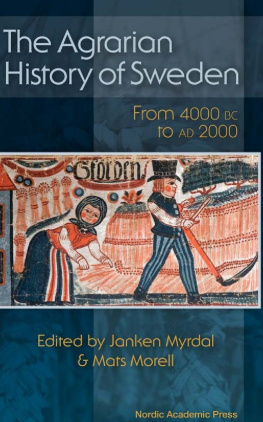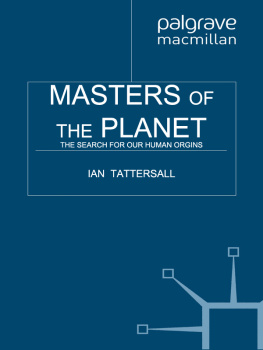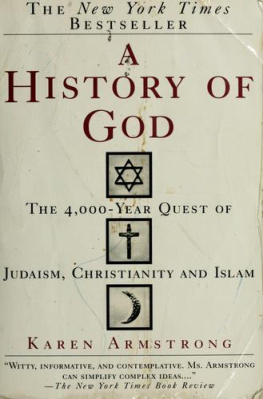Tattersall Ian - World from Beginnings to 4000 BCE
Here you can read online Tattersall Ian - World from Beginnings to 4000 BCE full text of the book (entire story) in english for free. Download pdf and epub, get meaning, cover and reviews about this ebook. year: 2008, publisher: Oxford University Press, USA, genre: Romance novel. Description of the work, (preface) as well as reviews are available. Best literature library LitArk.com created for fans of good reading and offers a wide selection of genres:
Romance novel
Science fiction
Adventure
Detective
Science
History
Home and family
Prose
Art
Politics
Computer
Non-fiction
Religion
Business
Children
Humor
Choose a favorite category and find really read worthwhile books. Enjoy immersion in the world of imagination, feel the emotions of the characters or learn something new for yourself, make an fascinating discovery.

- Book:World from Beginnings to 4000 BCE
- Author:
- Publisher:Oxford University Press, USA
- Genre:
- Year:2008
- Rating:4 / 5
- Favourites:Add to favourites
- Your mark:
- 80
- 1
- 2
- 3
- 4
- 5
World from Beginnings to 4000 BCE: summary, description and annotation
We offer to read an annotation, description, summary or preface (depends on what the author of the book "World from Beginnings to 4000 BCE" wrote himself). If you haven't found the necessary information about the book — write in the comments, we will try to find it.
World from Beginnings to 4000 BCE — read online for free the complete book (whole text) full work
Below is the text of the book, divided by pages. System saving the place of the last page read, allows you to conveniently read the book "World from Beginnings to 4000 BCE" online for free, without having to search again every time where you left off. Put a bookmark, and you can go to the page where you finished reading at any time.
Font size:
Interval:
Bookmark:
The World from Beginnings to 4000 BCE


Ian Tattersall


Oxford University Press, Inc., publishes works that further
Oxford Universitys objective of excellence
in research, scholarship, and education.
Oxford New York
Auckland Cape Town Dar es Salaam Hong Kong Karachi
Kuala Lumpur Madrid Melbourne Mexico City Nairobi
New Delhi Shanghai Taipei Toronto
With offices in
Argentina Austria Brazil Chile Czech Republic France Greece
Guatemala Hungary Italy Japan Poland Portugal Singapore
South Korea Switzerland Thailand Turkey Ukraine Vietnam
Copyright 2008 by Ian Tattersall
Published by Oxford University Press, Inc.
198 Madison Avenue, New York, New York 10016
www.oup.com
Oxford is a registered trademark of Oxford University Press
All rights reserved. No part of this publication may be reproduced,
stored in a retrieval system, or transmitted, in any form or by any means,
electronic, mechanical, photocopying, recording, or otherwise,
without the prior permission of Oxford University Press.
Design: Alexis Siroc
Logo design: Nora Wertz
Library of Congress Cataloging-in-Publication Data
Tattersall, Ian.
The world from beginnings to 4000 BCE / Ian Tattersall.
p. cm.
Includes bibliographical references and index.
ISBN 978-0-19-516712-2; 978-0-19-533315-2 (pbk.)
1. Human evolution. 2. Fossil hominids. I. Title.
GN281.T375 2007
599.938dc22 2007025714
1 3 5 7 9 8 6 4 2
Printed in the United States of America
on acid-free paper
Frontispiece: The skeleton of the Turkana Boy (from 1.6 million years ago), who would have topped
six feet in maturity. Photo by Denis Finnin, courtesy American Museum of Natural History.
Roughly 1.6 million years ago, Turkana Boy strode through the savanna of what today is northern Kenya. He was tall and long-legged and walked dozens of miles a day. He had lost most of the hair that had once covered early hominids and looked impressively human, yet Turkana Boy could not talk. The species Homo ergaster, of which Turkana Boy was a member, was a walking, but not yet talking, type of human that would eventually be replaced. One of several hominid species that predated our own Homo sapiens, Homo ergaster had many talents and abilities, skillfully wielding stone tools to perform increasingly complex tasks and, notably, inventing the handaxe.
The history of ancient bipeds and early humans reveals how each particular species, including Homo ergaster, faced challenges ranging from climate change to problems at the chromosomal level. These early humans had varying capacities and levels of intelligence, eventually changing from beings with massive teeth, protruding jaws, hairy bodies, and small brains to a species more like us. Some species succeeded, others became extinct, and along the way, new species appeared, sometimes intermingling with older ones. Humans became different and even brainier in processes that occurred in many parts of the world. The development of early humans from 5 million to 7000 BCE still has many unknowns, but from bones and artifacts that have been found around the world, anthropologists and archaeologists have been able to recreate some of the drama of human evolution. They can now effectively demonstrate the ways in which one species of humans replaced another, finally producing our own version of humanity.
This book is part of the New Oxford World History, an innovative series that offers readers an informed, lively, and up-to-date history of the world and its people that represents a significant change from the old world history. Only a few years ago, world history generally amounted to a history of the WestEurope and the United Stateswith small amounts of information from the rest of the world. Some versions of the old world history drew attention to every part of the world except Europe and the United States. Readers of that kind of world history could get the impression that somehow the rest of the world was made up of exotic people who had strange customs and spoke difficult languages. Still another kind of old world history presented the story of areas or peoples of the world by focusing primarily on the achievements of great civilizations. One learned of great buildings, influential world religions, and mighty rulers but little of ordinary people or more general economic and social patterns. Interactions among the worlds peoples were often told from only one perspective.
This series tells world history differently. First, it is comprehensive, covering all countries and regions of the world and investigating the total human experienceeven those of so-called peoples without histories living far from the great civilizations. New world historians thus have in common an interest in all of human history, even going back millions of years before there were written human records. A few new world histories even extend their focus to the entire universe, a big history perspective that dramatically shifts the beginning of the story back to the Big Bang. Some see the new global framework of world history today as viewing the world from the vantage point of the moon, as one scholar put it. We agree. But we also want to take a close-up view, analyzing and reconstructing the significant experiences of all of humanity.
This is not to say that everything that has happened everywhere and in all time periods can be recovered or is worth knowing, but there is much to be gained by considering both the separate and interrelated stories of different societies and cultures. Making these connections is still another crucial ingredient of the new world history. It emphasizes connectedness and interactions of all kindscultural, economic, political, religious, and socialinvolving peoples, places, and processes. It makes comparisons and finds similarities. Emphasizing both the comparisons and interactions is critical to developing a global framework that can deepen and broaden historical understanding, whether the focus is on a specific country or region or on the whole world.
The rise of the new world history as a discipline comes at an opportune time. The interest in world history in schools and among the general public is vast. We travel to one anothers nations, converse and work with people around the world, and are changed by global events. War and peace affect populations worldwide as do economic conditions and the state of our environment, communications, and health and medicine. The New Oxford World History presents local histories in a global context and gives an overview of world events seen through the eyes of ordinary people. This combination of the local and the global further defines the new world history. Understanding the workings of global and local conditions in the past gives us tools for examining our own world and for envisioning the interconnected future that is in the making.
Bonnie G. Smith
Anand Yang
The World from Beginnings to 4000 BCE
Evolutionary Processes
It is impossible for human beings fully to understand either themselves or their long prehuman history without knowing something of the process (or, rather, processes) by which our remarkable species became what it is. This is, as (almost) everybody knows, evolution. And although most of us have a vague idea of what evolution is all about, few realize quite how many factors have typically been involved in the evolutionary histories that gave rise to the diversity of todays living world. For evolution is not, as we often believe, a simple, linear process; rather, it is an untidy affair involving many different causes and influences.
Next pageFont size:
Interval:
Bookmark:
Similar books «World from Beginnings to 4000 BCE»
Look at similar books to World from Beginnings to 4000 BCE. We have selected literature similar in name and meaning in the hope of providing readers with more options to find new, interesting, not yet read works.
Discussion, reviews of the book World from Beginnings to 4000 BCE and just readers' own opinions. Leave your comments, write what you think about the work, its meaning or the main characters. Specify what exactly you liked and what you didn't like, and why you think so.




